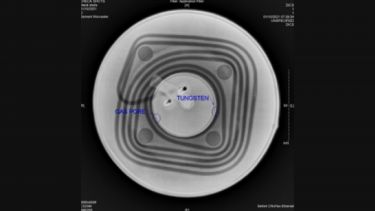Hot Isostatic Pressing (HIP) of metal powders offers the potential to create unique combinations of alloy systems in complex shapes in a consistent way, together with the opportunity to generate smooth internal cooling galleries and internal shape without the requirement for extensive machining. This allows manufacturing time to be reduced, materials to be conserved and, with process adaptation, worn parts can be reprocessed to extend service life. This process route addresses many of the limitations of more conventional forming techniques.
Seeking to develop new manufacturing techniques for plasma based equipment, Oxford Instruments approached AIMS Ltd. to understand if the application of Hot Isostatic Processing technology could reduce manufacturing time for key components. Crucial to this route development was incorporating water cooling configurations within these components, and the replacement of conventional machining/sealing of such cooling circuits with a more flexible and consistent design capability. A two phase development plan using the resources of both AIMS and Royce at the University of Sheffield, provided the capability to showcase how using a combination of alloy powder, solid elements and metal tubing, the component could be assembled and HIP'ed to form a solid structure, matched to the size of part required. Post-HIP analysis supported the fact that the internal cooling passages were gas and water tight, the powder structure was fully dense, and all of the component parts were bonded to create one contiguous structure. Any final machining was restricted to the matching of external dimensions.
Use of Hot Isostatic Pressing for the densification of powder shapes is well-known, but the creation of complex internal passages within such powder bodies has, to date, not been fully realised. The HIP technology used in this work has been successfully applied to water cooled die parts and large demonstrator components for nuclear applications, with others certainly possible.
Dr. B. A. Rickinson
Director, Creative Interfaces Ltd,
Developing both small scale samples and full sized prototypes demonstrated the technological capability, flexibility, readiness and consistency of this new manufacturing method, and suggested how the same process route could address the improvement of other parts. Part evaluation and costing analysis is underway. The application of the technique is appropriate to most metal alloy powders, and process industries, and the use of other internal forming techniques developed by AIMS is continuing with the support of the team from Royce at the University of Sheffield.
Dr. Bernie Rickinson has spent many years both in the application of HIP services and the development of HIP techniques relating to castings, powder densification, diffusion bonding, surface engineering and other novel applications. Currently the Director of Creative Interfaces Ltd., he provides advice and consults on the application of HIP, and is also active in the interaction and communication between the Materials and Product Design communities.


